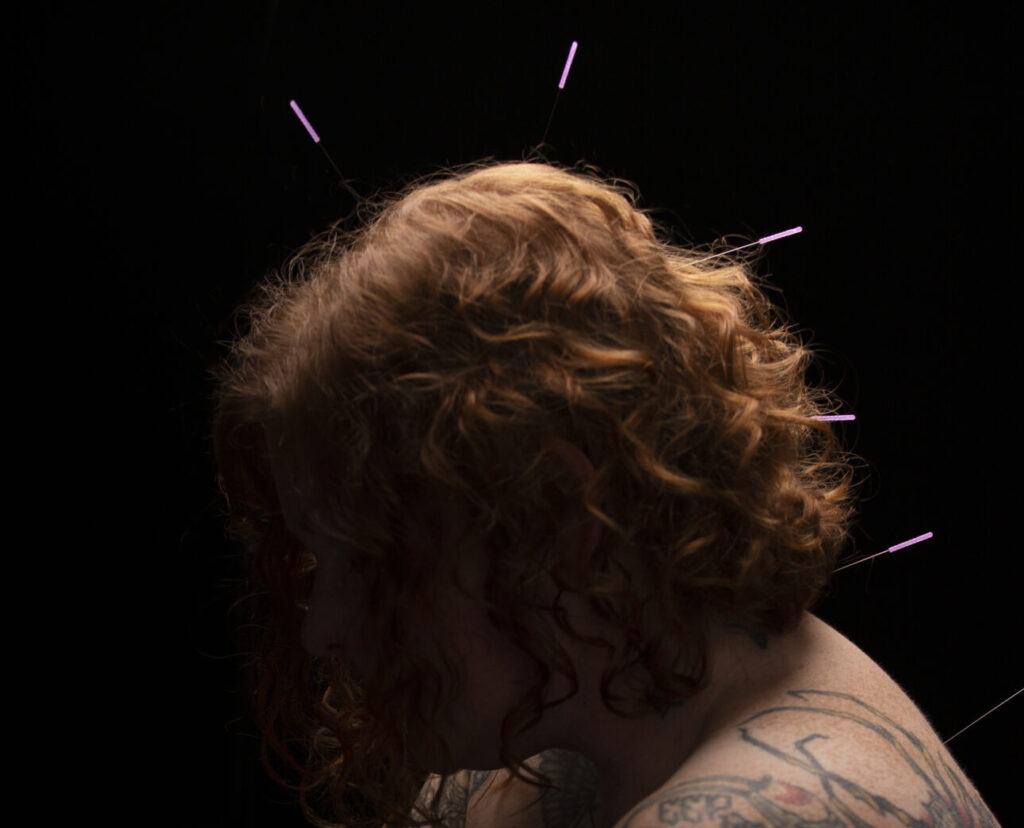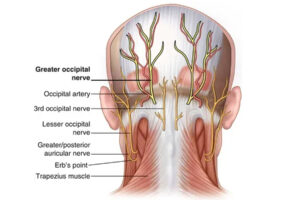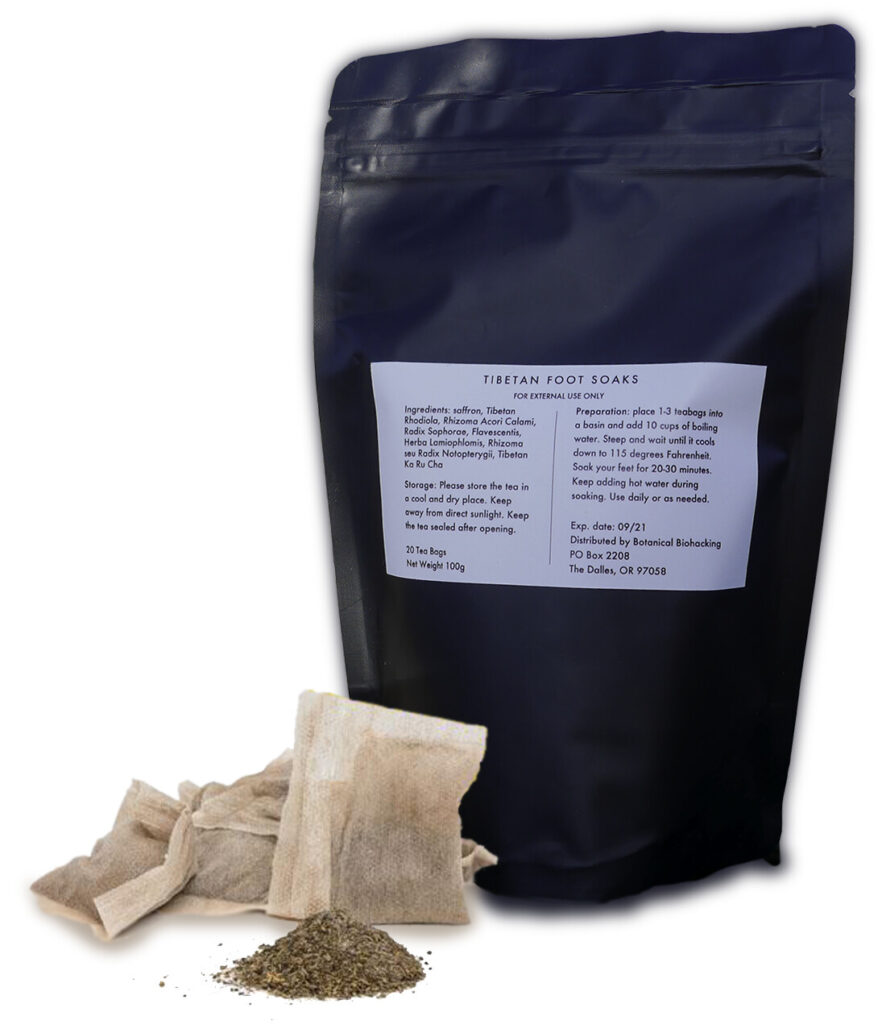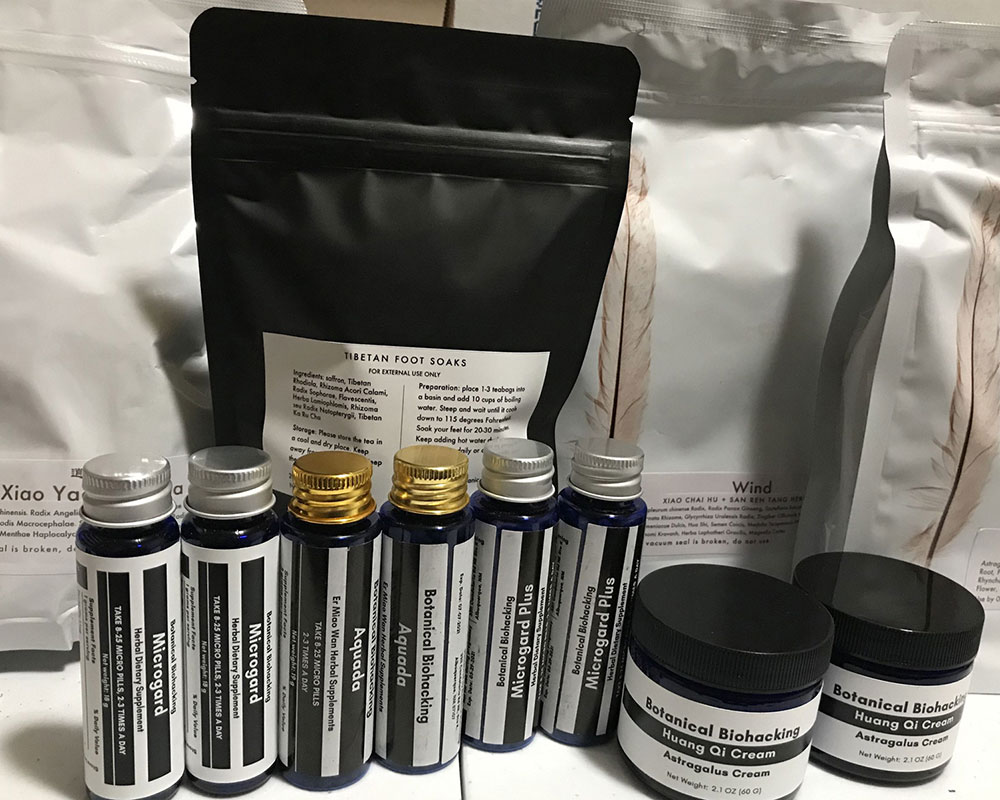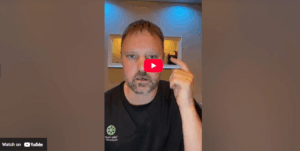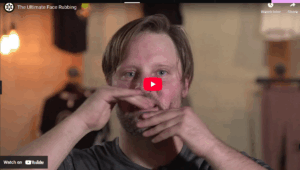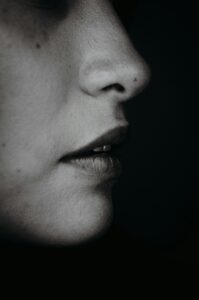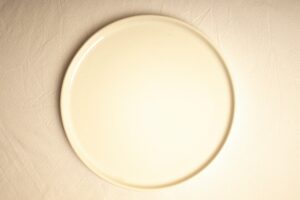Stress, Migraines, and the Balance Between Heaven and Earth
Migraines can incapacitate even the most resilient among us. And while many triggers can ignite the fire of migraines, stress remains a predominant accomplice. But what is stress exactly, and how does it contribute to migraines? Moreover, how can we alleviate its effects by harmoniously blending traditional Chinese medicine with western scientific perspectives?
Stress: The Great Separator
Western Perspective:
Stress is essentially the body’s response to external challenges. It’s an increase in the sympathetic nervous system activity, colloquially known as the “fight or flight” mechanism. This state can cause the release of hormones like epinephrine, and it can result in heightened blood pressure, heart rate, and reduced digestion.
Traditional Chinese Medicine (TCM) View:
Stress, from a TCM standpoint, can be likened to the separation between heaven and earth. The I Ching, an ancient Chinese text, references hexagram 12, . Hexagram 12, known as “stand still” or “stagnation,” presents an imagery of heaven positioned above earth. At first glance, this arrangement appears natural, symbolizing the sky above and the earth below. Yet, this configuration suggests a separation, echoing a state of disarray or imbalance, analogous to illness or even death. This depiction paints a picture of the soul ascending to the heavens, leaving the body behind on earth, creating a rift between the two.
Contrastingly, Hexagram 11 of the I Ching, known as Peace offers a more harmonious interaction between heaven and earth.This Hexagram pictures heaven below and earth above. This union signifies the optimal state where energies from the heavens, like rain and sunlight, nourish the earth, prompting it to flourish and reach upwards, as seen with sprouting plants and blossoming trees.
Translating this wisdom to our understanding of stress and migraines, we can say that the disconnection or stagnation (akin to Hexagram 12) that stress induces in our body and mind can be a significant trigger for migraines. When stress envelops us, our mind becomes untethered, drifting towards anxious contemplations of the future. Our breath, rather than flowing deep into our abdomen, becomes trapped, rising and becoming shallow in the chest and head. This misdirection mirrors the upward movement of our blood, diverted away from the extremities and concentrated in the head, leading to the familiar pulsing discomfort many recognize as the onset of migraines. Meanwhile, our body responds instinctively, tensing and constricting, akin to a river whose waters have been dammed, obstructing the once-smooth flow of energy. Through the lens of these hexagrams, TCM underscores the need for a harmonious integration of our mind, breath, blood, and body to counteract the pervasive disarray sown by stress.
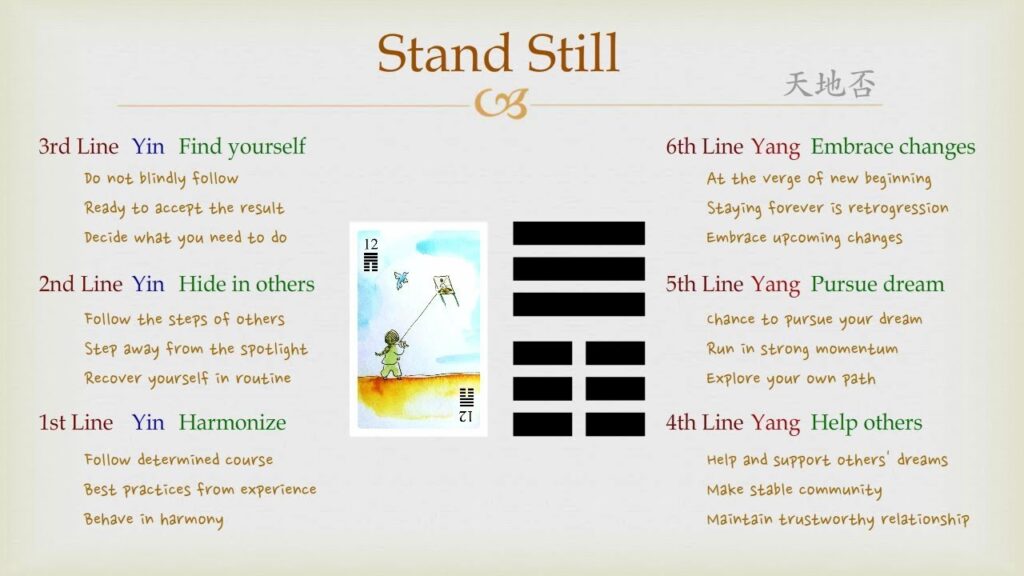
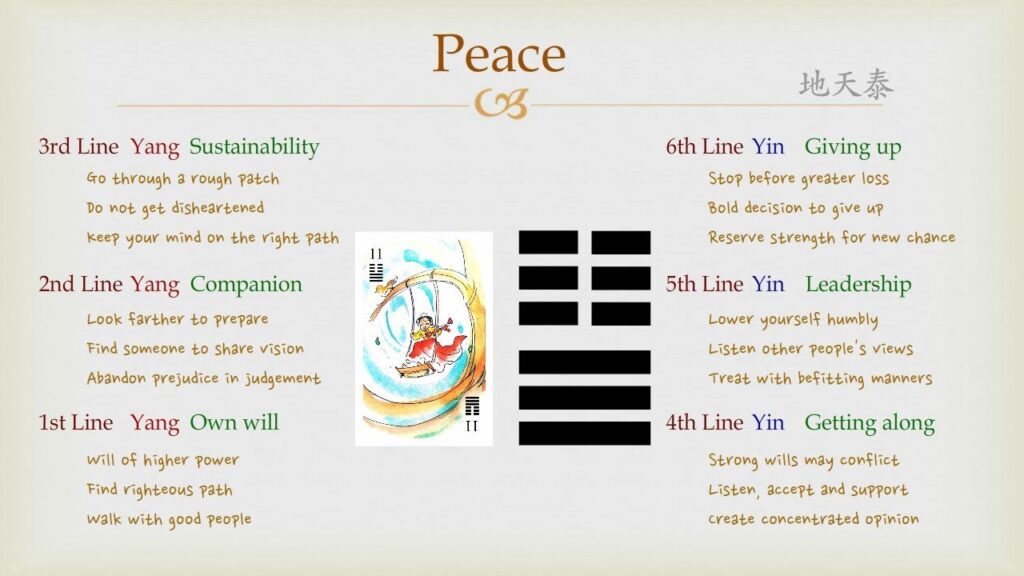
Stress's Impact on Different Levels of Our Being
Mind
Stress, with its accompanying anxieties, often steers our minds towards future concerns or spiritual ruminations. However, grounding oneself in the present moment helps. A simple technique involves standing on one foot with closed eyes. It necessitates focus, anchoring one in the present and forging a deeper connection with one’s body.
Let’s delve into the ‘Mind’ level. In times of stress, our minds often wander, burdened with anxieties about intangible futures or spiraling into a maze of overthinking. The mind’s preoccupation with such myriad concerns takes it away from the present moment, furthering the separation from our body.
However, the power of mindfulness provides a bridge between these Eastern and Western understandings. A simple yet effective technique, grounded in both realms, involves standing on one foot with eyes closed. This act necessitates the mind to focus on the present, drawing attention to the body, especially the core and the foot in contact with the ground. Such grounding exercises anchor the wandering mind, pulling it from its ‘Heavenly’ reveries to the tangible, ‘Earthly’ body. Western research supports this, highlighting how mindfulness practices can not only reduce stress but also alleviate migraine intensity and frequency.
Breath
Stress alters our breathing patterns. A stressed individual might take shallow breaths from the chest, governed by the sympathetic nervous system. Yet, diaphragmatic breathing, characterized by deeper, more calming breaths, can combat stress. An extended exhale, in particular, promotes the relaxing activity of the parasympathetic nervous system.
Breath, often deemed as the subtle bridge between the body and the mind, plays a pivotal role in our stress responses. Amidst stress, our instinctual reflex is to switch to a more rapid and shallow form of breathing. One can visualize the shock of plunging into icy waters; this sudden exposure prompts us to gasp, drawing breath sharply into our mouths and upper chests. Such a pattern aligns with the activation of our sympathetic nervous system, which governs our body’s fight-or-flight responses. When the stress is sustained, this style of breathing can become habitual, leading to a cascade of physiological repercussions.
One crucial impact of chest and mouth breathing is the involuntary tightening of the neck muscles and the elevators of the rib cage. In the short term, this allows us to draw in air more efficiently, catering to our body’s heightened need for oxygen during stress or rigorous physical activity. However, frequent or unintentional adoption of this breathing pattern, especially over prolonged periods, can exacerbate one’s predisposition to migraines. The muscles, when continuously strained, can form trigger points that can, in turn, be headache instigators.
To counteract this, the solution lies in the very act that became compromised — breathing. Diaphragmatic breathing, often lauded in both Eastern holistic practices and Western physiotherapy, is the key. Breathing deep into the diaphragm, as opposed to shallow chest breaths, facilitates the relaxation of the shoulder and neck muscles. The diaphragm’s downward movement during such breathing creates a gentle massage effect on the internal organs, promoting better circulation and overall relaxation.
Moreover, the art of exhalation plays an equally vital role. While the sympathetic nervous system oversees our inhalation, the parasympathetic system, responsible for rest and digestion, governs our exhalation. By consciously extending our exhalation, ensuring it’s longer than our inhalation, we tip the balance in favor of the calming, restorative parasympathetic system. This intentional act of breathing not only soothes the nervous system but also serves as a potent antidote against the burgeoning stress that can culminate in painful migraines. In essence, while breath might be involuntary, harnessing its power can be a conscious choice, offering a sanctuary of calm amidst life’s storms.
Blood
For migraine sufferers, stress aggravates the sympathetic nervous system, pushing blood circulation into the head, leading to the familiar throbbing pain. Warm foot soaks coupled with cold packs on the neck can redirect blood circulation, diminishing the ‘fight or flight’ reaction. By warming the feet and cooling the head, we invite a harmonious balance, evocative of the desired interplay between heaven and earth.
Stress, in this context, is the force pushing the boundaries apart. It encourages vasoconstriction in our extremities (like the hands and feet) while prompting vasodilation in our neck and head. This, in turn, increases the heart rate and blood pressure, urging blood to flow inwards and upwards.
However, the therapeutic goal in addressing migraines is to redirect this blood flow, encouraging it to travel down and out. The imagery of a “cool head and warm feet” captures this objective perfectly. The innate warmth of our body should be allowed to percolate to our feet, and the earth’s natural coolness should ascend to refresh the head.
To achieve this equilibrium, two venerable techniques stand out. The first involves immersing the feet in warm water, a foot soak, while simultaneously placing a cool cloth or ice pack on the neck. While the neck cooling offers migraine sufferers immediate respite (a strategy long championed by traditional healers), introducing foot soaks elevates the therapeutic experience. As the feet soak up the warmth, it embarks on an upward journey, converging with the descending coolness from the neck at the body’s core. This harmonious meeting of temperatures aids in restoring circulatory balance, vital for mitigating migraine pain.
Complementing the foot soak method is the “shaking technique”. Beyond mere movement, this practice employs vibration to stimulate vasodilation in the extremities, particularly the feet and hands. Concurrently, the rhythmic shaking helps alleviate the tension that routinely accumulates in the neck and shoulders, often manifesting as clenched jaws or hunched postures. By easing these physical stress markers, the shaking technique offers dual benefits – enhanced blood circulation and mental relaxation.
Body
Picture this: when we’re confronted with an unexpected or alarming situation, our instinctual reaction is often to lift our shoulders and thrust our head forward. This posture, resembling the protective stance of a startled animal, might seem benign, but over time, especially if maintained due to chronic stress or poor habits, it can lead to significant physiological repercussions.
Think back to a time you were startled or scared. The immediate bodily response might’ve been to clench your jaw tightly, hunch your shoulders, or even contract your body inward. Such reactions are innately human, rooted in our primal ‘fight or flight’ instincts. But herein lies the caveat: while these responses are effective for immediate threats, when they become habitual, unintentional patterns in our daily lives, they contribute to a myriad of issues, including migraines.
This constant tension, especially around the neck, jaw, and shoulders, reduces optimal blood circulation. It’s akin to pinching a water hose; the flow is disturbed, causing pressure build-up. Over time, this can manifest as migraine headaches.
Shaking
Enter the practice of shaking. If you’ve ever watched athletes moments before a competition, you’ve probably noticed them shaking their limbs. It’s not mere jitters; it’s a deliberate act to loosen muscles and improve blood flow. Shaking is not only our body’s way of releasing acute stress but also a potent remedy to combat chronic tension. Incorporating shaking exercises into our daily routine can reverse the damage done by unconscious clenching.
But how does it work? Shaking facilitates better blood flow, especially to extremities like hands and feet. The vibrations produced during this action stimulate the production of nitric oxide, a molecule that causes blood vessels to dilate. This ensures that while you’re actively engaged in this exercise, blood doesn’t get trapped in the larger muscles.
Occipital Neck Massage
This forward head posture can compress the occipital muscles situated at the base of the skull. These muscles, already sensitive, become prone to tension and pain, especially when pinched or strained. Furthermore, the pressure applied by this forward thrust can impinge on the cranial nerves emanating from the neck, resulting in pain that radiates upwards into the scalp. For many individuals, this sequence of tension, starting from the neck and then radiating towards the temples or eyes, culminates in what is commonly described as tension headaches.
For those suffering from this form of headache or migraine, relief might seem elusive. However, there are traditional techniques that can offer solace. Massaging the occiput, particularly around the acupuncture points GB 20 (located at the base of the skull between the two major neck muscles) and GB 12, can alleviate the tension and consequent pain. Chin tucks, a simple yet effective exercise, can also be beneficial. By tucking the chin towards the chest and holding the stretch, one can target and elongate the deep neck muscles, counteracting the effects of the forward head posture. Regularly practicing these techniques, in conjunction with maintaining proper posture, can play a crucial role in managing and potentially preventing tension-driven migraines.
Restoring Balance
Techniques for Mind and Body Regulation
1. Calm Mind Standing on One Foot:
– Purpose: Enhances concentration, balance, and tranquility by engaging the mind-body connection.
– Technique: Stand upright and find a focal point in front of you. Gradually lift one foot off the ground, resting it on the opposite leg’s calf or inner thigh. Maintain your balance and focus on steady breathing. This stance forces the mind to center itself, thereby inducing calmness.
2. Breathing Down and Out with Long Exhales and Diaphragm Breathing:
– Purpose: Relaxes the nervous system, promotes proper oxygenation of the body, and decreases stress responses.
– Technique: Sit or lie down in a comfortable position. Place one hand on your chest and the other on your stomach. Inhale deeply through your nose, ensuring that your diaphragm (stomach area) rises more than your chest. Exhale slowly and purposefully, extending the exhale to be longer than the inhale. This method shifts the balance from the sympathetic (fight or flight) to the parasympathetic (rest and digest) nervous system.
3. Regulate Cold Head and Warm Feet with Foot Soaks
– Purpose: Balances body temperature, promotes proper circulation, and relieves tension.
– Technique:
– Foot Soaks: Fill a basin with warm water and immerse your feet for 15-20 minutes. This process draws blood and warmth to the feet, promoting circulation.
– Shaking: Stand with feet shoulder-width apart and begin to shake your entire body, starting from the feet and moving upwards. The act of shaking not only enhances blood circulation but also releases trapped tension.
4. Regulate Clenching by Shaking and Massaging the Occiput:
– Purpose: Alleviates tension, especially in the neck and head region, which can mitigate issues like headaches and migraines.
– Technique:
– Shaking: As mentioned above, engage in full-body shaking to dissipate tension throughout the body.
– Occiput Massage: Sit or lie down comfortably. Using your fingers or a massage tool, apply gentle pressure and massage the occipital region (base of the skull). This region often harbors tension, and massaging it can offer immediate relief.
Immerse yourself in the soothing and revitalizing experience of Tibetan Herbal Foot Soaks..Tibetan Foot Soaks are specially packed tea bags containing a herbal mixture of Chinese herbs and minerals that have been shown to be particularly effective at alleviating chronic pain and improving circulation
We make available natural products that have been observed to make a difference in the lives of our patients, friends and family. You’re in good hands shopping with us.
About the Author
Willard Sheppy is a writer and healthcare practitioner who seamlessly melds scientific knowledge with practical applications in engaging and authoritative articles. He holds a Bachelor of Science in Environmental Science from Oregon State University and a Master’s in Acupuncture and Oriental Medicine from the distinguished Oregon College of Oriental Medicine.
In his work, Willard skillfully combines his extensive educational background in scientific research with his practical experience as a healthcare practitioner. Willard balances his life with martial arts and cherished family adventures. As a father of three, he often leads his family on camping and hiking trips along the breathtaking Oregon coast.
Connect with Willard on LinkedIn at linkedin.com/in/valleyhealthclinic or learn more about his services at valleyhealthclinic.com. Embark on this journey towards holistic health with Willard!

